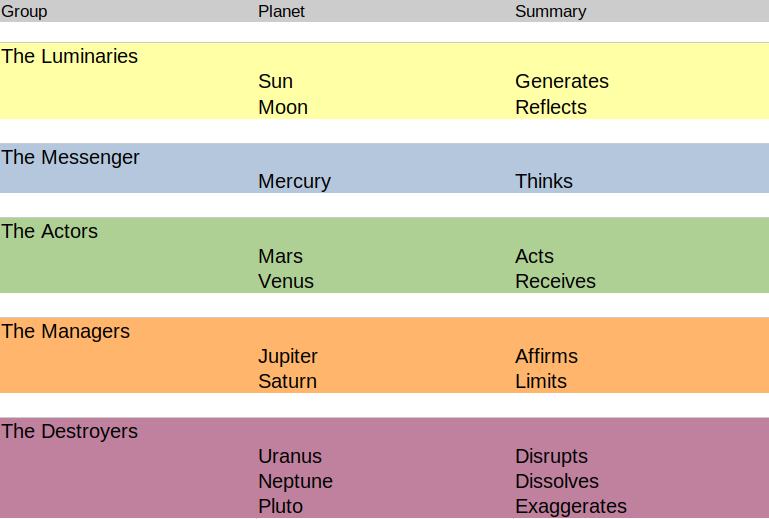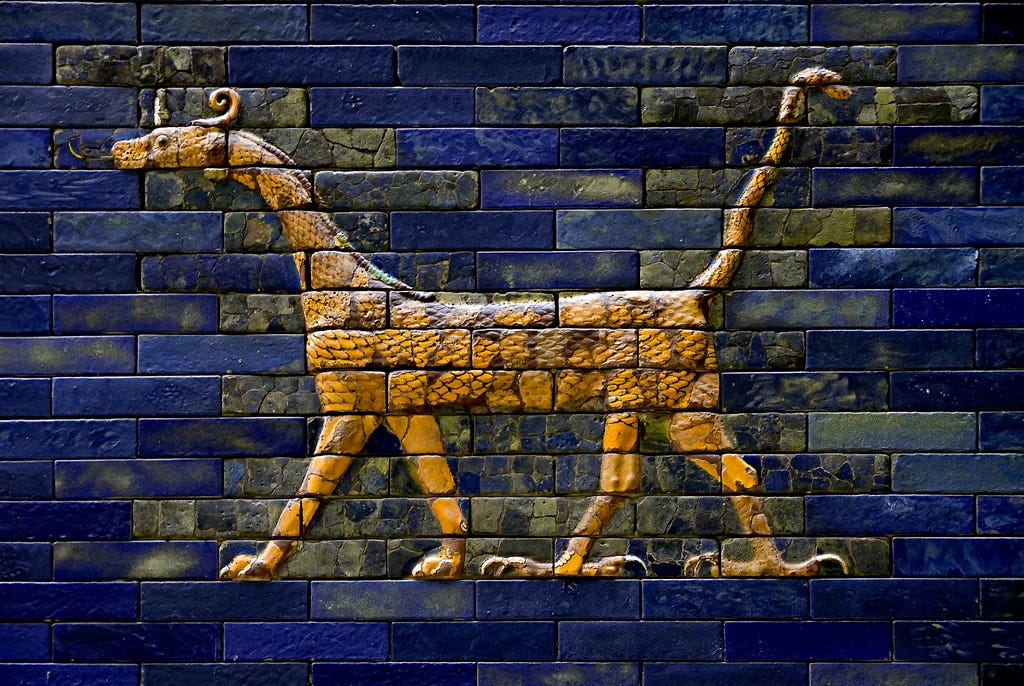Planetary Personas – Part 6 of the Chemistry of Time
If we sift through the dusty documents of written astrological history through Greece, Persia, India, Egypt, old Europe, or the modern United States, it is the planets who have always received the most attention. This owes to their role as the key players – the actors on the stage – who are most relevant for understanding the times, events, and nature of our world. These seven active elements relentlessly pour their influence through the sieve of the zodiac, jostling and negotiating for the greater role, each inevitably having their soliloquy, their irrelevance, and their gray eminence. It is this commanding role in the system which gives way to their near personification, responding to their complexities and variations in method. The planets are elemental, and have characteristics, properties, and roles which stay consistent. The trouble for the interpreter of the planets is that the vastness of their influence is greater than our own ability to fully know that influence. Can one fully understand this world, or even a single moment in its entirety? If it is the planets who form that world and those moments, and it is, then the same limitation is transferred to the understanding of them. This is why there are entire shelves of books devoted to even a single planet. As such it is advised to let the elemental properties of the planets inform you about the times and how they are formed rather than enter into the library thinking you already know what is contained in between the covers of the old dusty books on the shelf.
There are seven active elements and each is always in the mix. The active part of the system is primarily about weighting their relative strengths and impacts at a given moment. “Strength” can be compared to quantity in other physical sciences as the effect is comparable, and in the system the term “dignity” is applied to refer to this. The dignity of a planet takes two forms – accidental and essential. Essential dignity tells us how strong the planet is based upon which territorial element (zodiac sign) it is in at that moment. In essence this indicates the volume of that element which is present at the given moment. It is as if there are three hydrogen molecules in general but the number increases to seven when hydrogen mixes with some materials, and decreases to just one when mixing with others. How does this change the substance that is produced by combing hydrogen and the other elements (whose volumes are also changing)?
Chemistry shows that while two Hydrogen when combined with one Oxygen produces the stable substance we call water, a mix of three Hydrogen with one Oxygen does not produce a liquid substance we recognize as water. The produced substance does have a relationship to water, as it consists of the same materials, and as a result things we know about water and how it behaves when mixed with other elements can be instructive about what occurs when this related combination is mixed. Further, since we know that this substance has the quantities of Hydrogen and Oxygen needed to make water we know that anything that alters the combination, resulting in the loss of just one of the Hydrogen molecules, will end up producing water. The relationships of planets to each other, as well as a handful of other considerations, make up the measurement known as accidental dignity. The accidental dignity of a planet can act in a way that is similar to removing that extra Hydrogen molecule, knocking the combination back into a substance we know as water. Simplified, we have a quantity of a planet that consistently results from its location in the zodiac, but that quantity can be altered by its relationship to other elements.
When measuring a planet it is similarly necessary to consider the state of the others, as they are always in combination with each other. Finally, we must understand that the territory they occupy can also be altered at a given time and that may reduce or increase the “quantity” it is able to provide to the active element.
The planets themselves are unique to each other, but are grouped in interesting ways that reveal much about the fundamental nature of our world. Below are the planets in their key groups, along with a single-word summary of their individual modes of action.

As noted already, the Sun and the Moon are known as the “Luminaries.” The Sun will generate things whereas the Moon will reflect them. The Moon reflects all things, not just the light of the Sun, and it is this concept of “reflection” that is needed to understand the Moon element. Similarly it is the concept of “generating” that underlines the things that result from the elemental interactions of The Sun.
Mercury stands alone as The Messenger. It has a tendency to gather, carry, and deliver that which is done by other elements. Mercury informs other elements.
Mars and Venus are yin and yang. Mars is the element that takes action and Venus is that which receives action.
Jupiter and Saturn are the Managers of the elements. The Jupiter element affirms things, whereas the Saturn element defines their limits.
Uranus, Neptune, and Pluto occupy a group apart from the core system of the seven planets, but they are critical as the elements that destroy what they interact with. Think of them as a form of solvent that is always around to prevent closed-loops from forming. We will discuss them at length later.
A single word is of course inadequate to encompass the full nature and properties of each planet. These terms are meant to address the most base theme of each so you can distinguish their influence and follow along as we explore the calendar going forward.

Leave a Reply